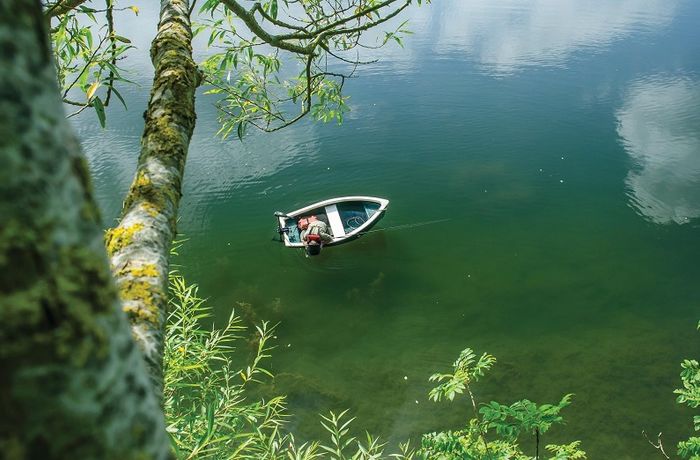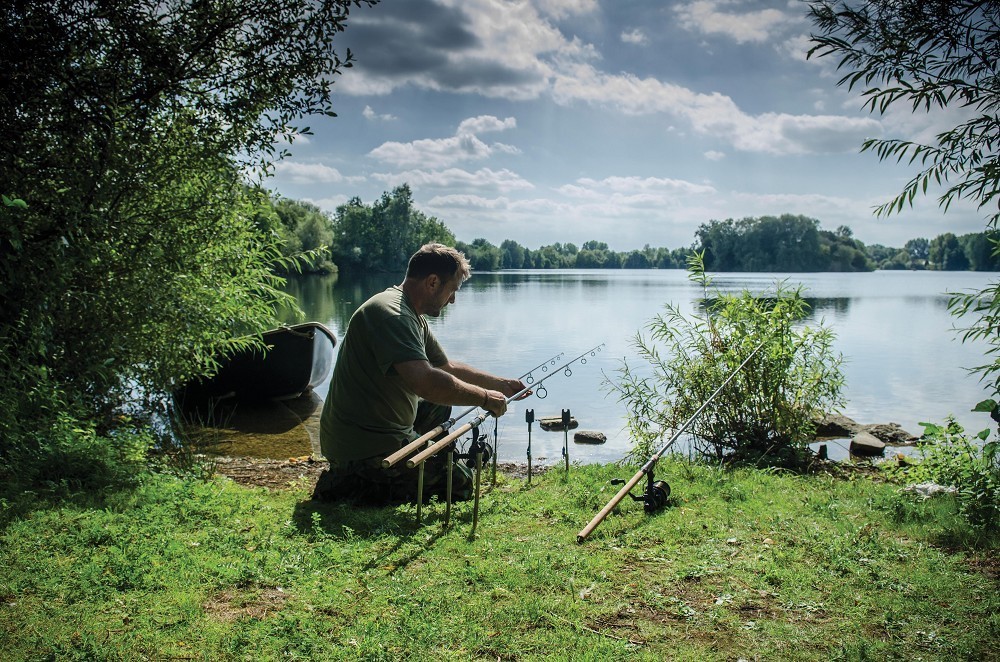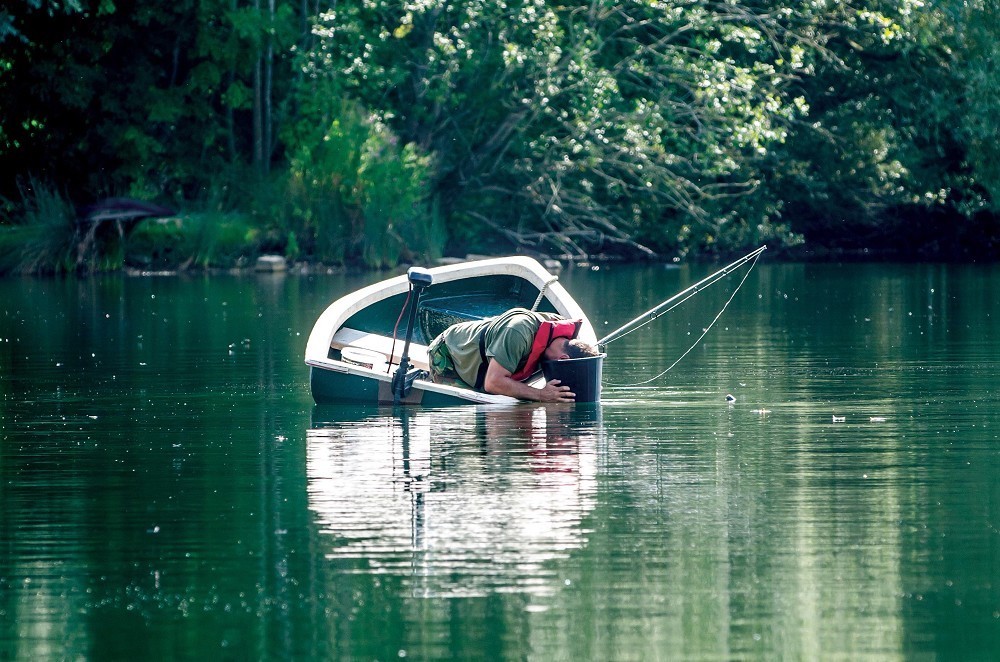Jon Mac on rigs
Do you really know why you use your rigs? We delved into the mind of Wychwood’s Jon McAllister to find out his thoughts on everything riggy…

Everyone has a favourite rig that travels with them, whether it’s a rig that they’ve used successfully elsewhere or one their peers use to good effect. Having an ‘old reliable’ is the most common reason why anglers use what they use and after all, carp fishing is all about confidence and if a rig gives you confidence, why change things?
I’ve talked many times before about the Multi Rig. It’s a rig that I’ve caught many of my fish on and as a result, it’s been one of the things that’s stayed consistent in my angling. I started using it on Sutton-at-Hone after one of Car Park Lake’s very successful anglers, Dave Ball, showed me it and instantly I saw benefits for my fishing. Fast-forward a few years and after CARPology showed me using the rig full-time, it gained the nickname, the ‘Jonny Mac Rig’. I’m always mindful at this point to make clear that although I helped popularise it, the mechanics of the Multi Rig were (I’m led to believe) thought up by the great Mike Kavanagh.
Anyway, initially the thing that drew me to the rig was its simplicity; I’ve always used simple rigs, rather than intricate rigs that rely on a series of complementary mechanics. Dave pointed it out to be a pop-up rig and at that time, I was a pop-up fanatic so it just suited me. Coincidentally, I was shown the rig during a period of carp fishing when coated braid came to prominence. The rig I previously used was a simple braid set-up, a Knotless Knot using a needle to mount the bait on the Hair; very simple but very traditional. The problem with that rig was that it had tendencies to tangle on the cast and this was something I never felt fully comfortable with. Not knowing fully if the rig was fishing properly did my head in and the Multi-Rig just seemed to fill me with confidence. Add to this the fact I could incorporate coated braid meant it had strength but with fewer tangles that old school mono rigs provided, the best of both worlds really. It also benefited from a ‘D’, which was an improvement on a standard Hair I felt, giving the bait and the hook more movement between each component. No one I knew was using it and Dave (Ball) pretty much told me to give it a go and make it my own.
I clearly saw from the outset that this was a rig that I would never doubt the effectiveness of and I knew that nothing else at that time offered what I wanted in terms of simplicity and mechanics.
It’s probably around 2000/2001 that I started using the rig and it’s hard to recall now which fish sealed the deal with this rig, although I can remember during 2001 I started on Runcton (a water next to Vinnetrow) and the rig just worked from the off and I never looked back.
All round usage
The Multi Rig is very versatile. Whether it’s with a bottom bait or a pop-up, it just works. Although I was perfectly happy with fishing pop-ups on the rig, it was while on Runcton that I made an adjustment to the rig to ensure its maximum effectiveness. That adjustment was to use a long shank hook in conjunction with mini tigers. Instead of tying a pop-up to the rig ring on the ‘D’, I would simply pass a bait band through the ring, back through itself and then would mount three mini tigers on using a needle. The band works like a Hair but fits the bait nicely and because the Hair is effectively elasticated, with a boilie stop in place, the baits are on there and they’re not coming off.
What I like about the mechanics of the rig is that the doubled-up section of coated braid that passes through the hook eye acts almost like a short, stiff link down to the knot and the break in the coating. The ‘D’ is massively important in this rig, as it allows the rig ring to really exaggerate the blow back properties. Once the fish tries to eject the bait, the bait blows out centrally, almost pushing the hook down into the bottom lip. The combination of the ‘D’ and the stiff link means bottom lip hook holds every time. Regardless of the type of bait you use – bottom bait or pop-up – the bait always comes out of the fish’s mouth the same. The ‘D’ is critical in this.
Although I’ve used all sorts of bait on this rig, my all time favourite is a 14mm pop-up teamed with a size 4 hook, although I’ll talk later in this piece about why I like big hooks.
When it comes to pop-ups, I occasionally vary the length of the hook section, adjusting how high the bait sits off the bottom. Ideally, the hook section of coated braid (the loop forming the ‘D’) should be as short as possible. Basically, the gauge for how big the loop should be is the size of hook; when you thread the loop through the eye of the hook you should only just be able to pass the loop over the bend. So, the loop for use with a size 8 will be considerably smaller than the loop for a size 4. The reason I like it short is so it doesn’t look too blatant; tie it with a three-inch loop and the bait will sit too high.
I would only adjust the height of the pop-up depending on the terrain; low-lying onion weed for example, which grows to a height of four- or five-inches off the bottom (as it does on Elstow Pit 2) would see me set the pop-up about four-inches. Remember, there’s shot/putty on the other side of the break, which pins the ‘hinge’ to the bottom. The rig also sits nicely when dropped on silkweed, if the link is at least three-inches. PVA foam on the hook helps to avoid hook point masking.
Another aspect of pop-up height that I think is important is the type of fish you’re targeting. I might be way off the mark, but my theory regarding big, deep-bodied fish is that because of their higher mouth position (because they’re so deep), they have to really tilt themselves over the top of a bait to suck it in and in many cases, I think they’re sucking from further away. If I’m targeting a fish like this – the Fat Lady in St Ives is a good example – I’d definitely lengthen the link between the hinge and the hook. To be fair though, I’d do this with any pop-up rig.
Going rig
I started using the rig with a size 8 hook, but over recent years I’ve moved up in size and only ever really use big hooks these days. The rig isn’t a contributing factor in this, more so the fact that I noticed I lost fewer fish in weed using big hooks, so naturally I’ve incorporated big hooks into the Multi Rig.
I say ‘big hooks’ but I don’t actually see the hook I use – size 4 Atomic Chodda – as a big hook these days. Let’s look at it this way: I’ve seen roach caught on a size 6 so a size four to a great big carp is nothing. In reality, I’d have no hesitation in using a size 2 if Atomic made one. The mouth of even a 20lb fish is massive and will easily engulf a size 4 so it surprises me that people still shy away from big hooks. There should be no change to your mentality; it’s a hook, that’s it. The overriding thing for me is that when people say they’re losing fish, especially in weed, it usually comes back to the fact that their hook is too small.
Tying it right
As I’ve said, the Multi Rig is all about simplicity. Compared to something like a Hinged Stiff Rig, it’s easier to tie but there are still things that you can do wrong when tying the Multi Rig. One thing that’s very easy to do, which will ultimately affect how it settles, is when you tie on the swivel, it’s very easy to create a small break in the coating of the braid when you tighten the knot. You really have to gently tease the knot tight, making sure there’s plenty of saliva on the coating so it tightens without compromising the coating. If the coating is compromised, the rig has a tendency not to kick away from the lead far enough.
Another common mistake that can be made is putting putty or shot in the wrong place – it should be next to the ‘hinge’ but resting on the deck; place it on the hook section and you’ve effectively ruined how the rig moves freely when a fish sucks and blows.
Some people like to critically balance using a small shot or piece of putty, but as Mike Willmott wrote when he was fishing Ashlea Pool, he over-shotted and it proved more effective. How much shot you apply is by-and-large a case of trial and error, although I generally use a No.1 shot because it suits the size of pop-up I use. Corkball pop-ups aren’t really suited to this rig because you need loads of weight to counterbalance the bait.
The type of hook isn’t massively important, although I use a Chod-type pattern with an slightly out-turned eye. I’ve seen the rig work effectively with standard straight eyes by using a length of silicone tubing to create a kick over. Regarding the length of silicone, the bigger the hook, the longer the silicone tubing. This tubing goes over the eye of the hook by about 3mm, enough to hold it in place and just butt up against the knot of the loop. Tying this rig is very much about matching components in length and size.
I’ve been questioned why I don’t use more ‘fashionable’ rigs such as the Choddy or Hinge Stiff Link but my answer to this is not so much I don’t like these rigs, but more so down to the fact that I’d rather present a bait on a small clear patch. The Choddy is better suited to fishing in the weed and that doesn’t suit my style, as I’m a stickler for finding clear spots. What I don’t get is why people using a Chod Rig cast it around to find clear spot and a drop yet their Choddy is fishing in weed, off that clear spot. I just don’t get it!
Picking the right rig
In terms of moving away from the Multi Rig, I’d be narrow minded to think that it’ll work all the time, every time. When I started using the Linch ‘Em Rig this year, it was a forced change because I was noticing that freebies were being taken yet my pop-up had been moved. I just needed to see how the finicky Stoneacres carp would react to something different. I talked about this rig in a previous issue of CARPology so you know the ins and outs of it, but I just had to make a change because if I’d stuck with the Multi Rig, I may never have caught the fish I have done on the lake. I’m very mindful of how match anglers are constantly changing rigs to suit the situation and there’s nothing wrong as a carp angler with changing when you need to, to see if you can ‘up’ your catch-rate. I’ve nothing against fishing different rigs on different rods either because sometimes one rig will work better than another in one situation but not in another. It’s all about being open-minded and flexible in your approach.
I often hear the terms ‘big fish rigs’ and ‘small fish rigs’. People confuse small fish rigs and big fish rigs with rigs employed in a particular bait application that is more susceptible to small fish taking the bait first. PVA bags are a tactic where, when there are smaller carp present, they will often tear into the bait before the big residents and therefore get caught quicker or more often. The rig isn’t to blame, more a combination of the stock and the way you fish for the carp.
I also get questioned on why I don’t use helicopter-type rigs. My answer is simple: I like to eject the lead when I get a bite, mainly to get the fish up in the water, and although helicopter rigs can be adapted to ditch the lead, a lead clip is much easier. When you’re fishing for the fish of a lifetime you don’t want that lead banging around, potentially losing you that prize.






